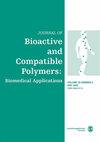Photo-crosslinked hydrogel as injectable intraocular lens for cataract surgery implantation
IF 2.1
4区 生物学
Q3 BIOTECHNOLOGY & APPLIED MICROBIOLOGY
引用次数: 0
Abstract
Cataract is the leading cause of the blindness worldwide. Natural lens removal followed with intraocular lens (IOL) implantation is the main clinical treatment for cataract. However, the shape and the optical power of current IOLs were fixed, which were not favorable for patients, especially for children with congenital cataracts. An injectable IOL is an immerging replacement for a regular IOL due to the accommodation of external packing shapes. In this study, we developed a rapid, in situ gelation of an injectable photo-crosslinked hydrogel as an injectable IOL material. In this investigation, injectable hydrogel (G/D hydrogel) was fabricated from Gelatin methacrylate (GelMA) and N- (3, 4-dihydroxyphenylidene ethyl) methacrylamide (DMA) via photo-crosslinking for injectable IOL applications. Different preparation parameters such as the concentration, proportion, light intensity, and curing time were optimized based on the gelation time, swelling ratio, and mechanical properties of the produced G/D hydrogels. The results of in vitro cellular experiments showed that the G/D hydrogel had good and stable clearance of lens epithelial cells. The hydrogel was implanted into the eyes of the young rabbits for 1 month, and the results also showed that injectable G/D hydrogel can obtain good intraocular implants and have inhibitory effects on posterior capsular opacification. Thus such photo-crosslinked G/D hydrogel can serve as an injectable IOL application in cataract surgery.光交联水凝胶作为白内障手术植入的可注射眼内透镜
白内障是全球致盲的主要原因。自然摘除晶状体后植入人工晶体(IOL)是临床治疗白内障的主要方法。然而,目前的人工晶体形状和光学功率都是固定的,对患者不利,尤其是先天性白内障儿童。注射式人工晶体可适应外部填料形状,是普通人工晶体的浸入式替代品。在这项研究中,我们开发了一种快速原位凝胶化的可注射光交联水凝胶作为可注射人工晶体材料。在这项研究中,利用甲基丙烯酸明胶(GelMA)和 N-(3,4-二羟基苯基亚乙基)甲基丙烯酰胺(DMA)通过光交联制成了可注射水凝胶(G/D hydrogel),用于注射人工晶体。根据所制得的 G/D 水凝胶的凝胶时间、膨胀率和机械性能,对不同的制备参数(如浓度、比例、光照强度和固化时间)进行了优化。体外细胞实验结果表明,G/D 水凝胶对晶状体上皮细胞具有良好而稳定的清除能力。将该水凝胶植入幼兔眼内 1 个月的结果也表明,注射用 G/D 水凝胶可获得良好的眼内植入效果,并对后囊遮盖有抑制作用。因此,这种光交联 G/D 水凝胶可作为注射型人工晶体应用于白内障手术。
本文章由计算机程序翻译,如有差异,请以英文原文为准。
求助全文
约1分钟内获得全文
求助全文
来源期刊

Journal of Bioactive and Compatible Polymers
工程技术-材料科学:生物材料
CiteScore
3.50
自引率
0.00%
发文量
27
审稿时长
2 months
期刊介绍:
The use and importance of biomedical polymers, especially in pharmacology, is growing rapidly. The Journal of Bioactive and Compatible Polymers is a fully peer-reviewed scholarly journal that provides biomedical polymer scientists and researchers with new information on important advances in this field. Examples of specific areas of interest to the journal include: polymeric drugs and drug design; polymeric functionalization and structures related to biological activity or compatibility; natural polymer modification to achieve specific biological activity or compatibility; enzyme modelling by polymers; membranes for biological use; liposome stabilization and cell modeling. This journal is a member of the Committee on Publication Ethics (COPE).
 求助内容:
求助内容: 应助结果提醒方式:
应助结果提醒方式:


